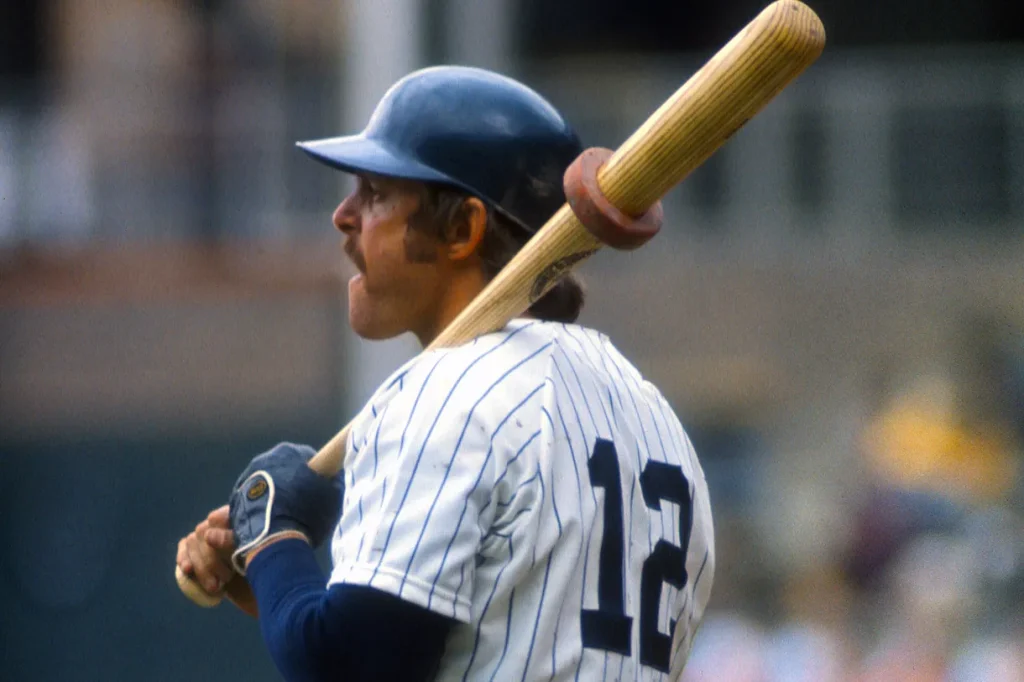Many major sports have no compunctions about changing the rules on a nearly constant basis. Too much scoring? Give the defense more freedom. Too little scoring? Unleash the offense. Games too long, or too boring? Stick a clock on the court and force teams to maintain a quicker pace of play.
The two exceptions are baseball and tennis. Both games have been notoriously, persistently reluctant to change in their 150-or-so years as spectator sports. Occasionally, though, circumstances converge to make change possible.
In the early 1970s, a lot of circumstances converged. New leagues sprouted, competition flourished like never before, and–most of all–television forced each sport’s leadership to consider exactly what its product was, and what it should look like.
Baseball’s American League responded to a spate of low scoring seasons and weak attendance by introducing the designated hitter rule. The National League had more history and more stars, but beginning in 1973, the American League–thanks to its willingness to experiment–added more offense. By the end of the decade, it had closed much of the attendance gap.
New York Yankee Ron Blomberg became baseball’s first designated hitter on April 6, 1973. The bat he used for his first time at the plate was sent to the Hall of Fame, even though it barely left his shoulder. In that first appearance of a designated hitter, Blomberg came up with the bases loaded and walked.
Matty Alou, the Yankees veteran who scored on the play, cracked: “See, it’s added offense to the game already.”
* * *
What strikes me about the designated hitter rule is how closely it parallels the adoption of the tiebreak. I’ve already written a few times about the tiebreak in this series about 1973. The now-familiar method of ending sets was still new, and it was still weird.
“Those tie-breakers are such bullshit,” said Raymond Moore after a win in Vancouver in March. “None of the players know how to play them yet.”
John Newcombe (left) and Stan Smith were considered in 1973 to be among the best tiebreak players in the game. The secret, clearly, was in the mustache.
Some players didn’t like it, but the sport needed to evolve. Jimmy Van Alen had pushed for tie-breaks as part of his “Simplified Scoring System” since the 1950s. We tend to think of long sets as epic, memorable moments. Not so in those days: The typical 12-10 set consisted of two guys who couldn’t return serve for 75 minutes. It wasn’t much fun to watch, and it would never fit into a two-hour slot on network television.
So, nearly a century after competitive tennis began, the sport finally embraced a new idea. The US Open adopted Van Alen’s nine-point “sudden death” tiebreak in 1970, and Wimbledon began playing breakers at 8-all in 1971. World Team Tennis would experiment even further beginning in 1974. While tennis–like designated-hitter baseball–remained easily recognizable, the new rule was a belated acknowledgement that even the most hidebound sports need to change with the times.
For nearly a half-century, purists in both baseball and tennis were left with something to cling to. Pitchers batted for themselves in National League games until 2021, and a first-round match at that year’s French Open ran to 10-8 in the fifth. But the traditionalists could hold out no longer. The designated hitter is now universal in American baseball. Both the grand slams and the Davis Cup have adopted rules to decide every deadlocked set with a tiebreak. The rule changes that represented such a shift 50 years ago finally won the day.
* * *
This post is part of my series about the 1973 season, Battles, Boycotts, and Breakouts. Keep up with the project by checking the TennisAbstract.com front page, which shows an up-to-date Table of Contents after I post each installment.
You can also subscribe to the blog to receive each new post by email:
